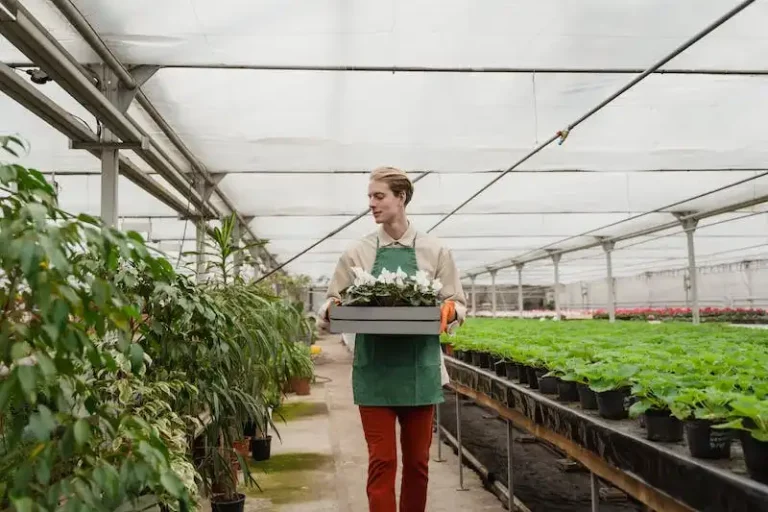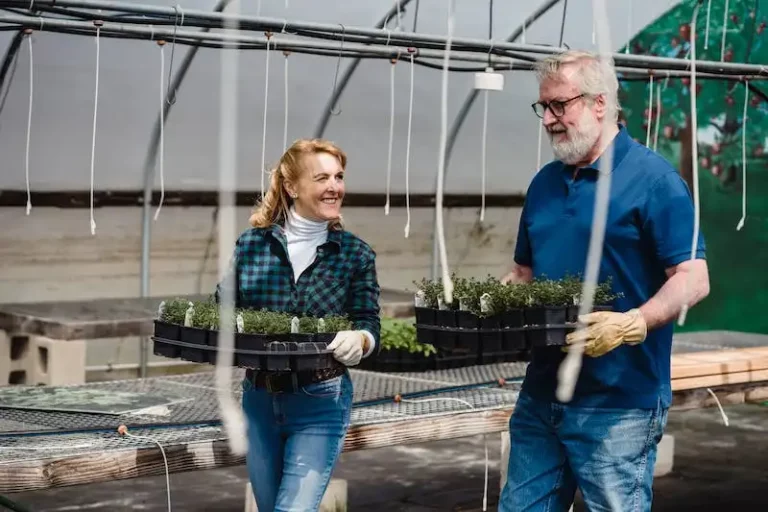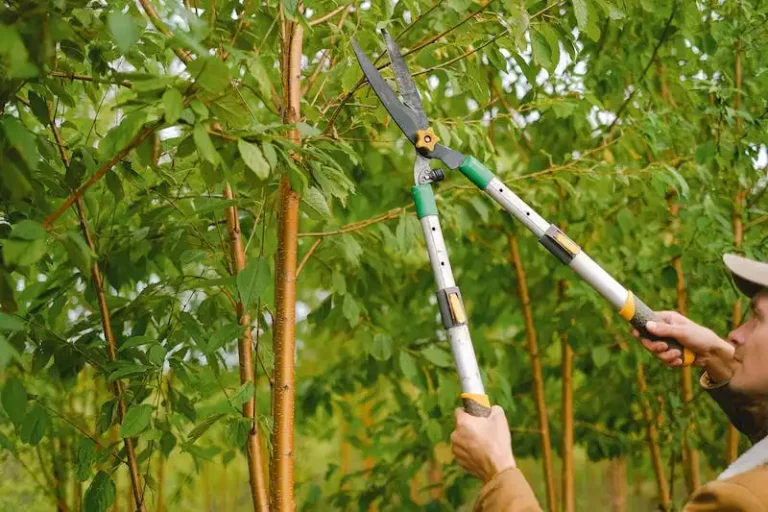Verbena is a versatile and beautiful flowering plant that can brighten up any garden or landscape. It is relatively easy to grow and provides an array of vibrant colors to choose from. Whether you are an experienced gardener or a beginner, verbena is a great addition to your garden.
When it comes to caring for verbena, there are a few key things to keep in mind. One of the most important aspects of verbena care is pruning. Regularly pruning your verbena plants will help them grow more vigorously and produce more blooms. It is also important to provide them with the right conditions, such as full sun and well-drained soil.
There are many varieties of verbena to choose from, including the popular verbena hastata and verbena bonariensis. These varieties have the same basic care requirements, so no matter which one you choose, you can use the same caring techniques. Whether you decide to grow verbena from seed or purchase seedlings, you’ll need to follow the right planting instructions to ensure their success.
If you’re new to growing verbena, you may have some questions. Here are some frequently asked questions about verbena:
– How do I get verbena to grow?
– When is the best time to plant verbena?
– How much sun does verbena need?
– How often should I water verbena plants?
– What types of diseases and pests should I watch out for?
Now that you have a basic understanding of verbena care, you can start growing your own verbena plants. Whether you choose the classic yellow or the vibrant pink and blue varieties, verbena is sure to add a pop of color to your garden. So get your hands on some verbena seeds or seedlings and start planting!
How to grow Verbena
Verbena is a beautiful and versatile plant that can be grown from seed or transplants. It is an annual plant that thrives in full sun and has a wide range of uses in the garden.
One of the key features of Verbena is its ability to attract bees and butterflies. It is highly beneficial for pollinators and can help to create a vibrant and diverse garden ecosystem.
When it comes to growing Verbena, the requirements are fairly simple. The plant prefers well-drained soil and should be watered regularly, especially during hot and dry conditions. It is also important to fertilize the plant with a water-soluble fertilizer, such as Miracle-Gro, to encourage healthy growth and vibrant colors.
Verbena plants are also quite versatile in terms of their usage. They can be planted in flower beds, borders, or containers and can be used as groundcover or as a companion plant to other flowers and plants. They have a long blooming season and come in a variety of colors, including bright reds, pinks, and purples.
Verbena plants are also low maintenance and require minimal pruning. They have a spreading habit and will often fill in gaps and empty patches in the garden. Once planted, Verbena will happily grow and take care of itself. However, if you prefer a more compact and tidy appearance, a light pruning in the early spring can help to shape the plant and promote healthy growth.
If you’re looking for a plant that can bring beauty, pollinators, and color to your garden, Verbena is a great choice. Its wide range of growing conditions and long-blooming characteristics make it a popular choice for many gardeners. So go ahead and start growing your own Verbena garden!
Types of Verbena to grow
Verbena is a popular plant that comes in various types, each with its own unique features and qualities. Whether you’re a beginner or an experienced gardener, there’s a verbena type that will suit your planting needs and preferences.
1. Common Verbena: This is the most commonly grown type of verbena. It has a mounding growth habit and can reach a height and spread of up to 2 feet. Common verbena is often used as a companion plant in the back border because of its colorful flowers and ability to attract pollinators.
2. Superbena® series: Superbena® verbena is a highly popular type known for its long-lasting flowers and vigorous growth. It is a self-cleaning plant, meaning you don’t have to deadhead it to encourage more blooms. The Superbena® series offers a wide range of colors to choose from, including purple, pink, and violet.
3. Meteor verbena: This verbena type is grown for its stunning foliage color. It features deep purple leaves that stand out in any garden or border planting. Meteor verbena is a low-maintenance plant that thrives in full sun and well-drained soils.
4. Lemon verbena: If you’re looking for a verbena type with a lemony scent, Lemon verbena is the perfect choice. This type is often used for culinary purposes, as its leaves can be used in teas, desserts, and other recipes. Lemon verbena is a perennial plant that can withstand winter conditions in some zones.
5. Hastata verbena: Hastata verbena, also known as purpletop verbena, is a tall verbena type that can reach a height of 6 feet or more. It produces beautiful purple flower spikes and thrives in hot and dry conditions. Hastata verbena is a great choice for adding vertical interest to your garden.
When growing verbena, regardless of the type, it’s important to provide the ideal growing conditions. Verbena prefers full sun and well-drained soils. It can tolerate drought conditions, but regular watering is needed during the growing season. Fertilizing verbena plants with compost or a balanced fertilizer can help promote healthy growth.
Some common pests that may affect verbena include aphids and spider mites. To prevent pest issues, keep an eye on your plants and take appropriate action if necessary. Verbena is also a favorite plant of bees, so growing it can benefit the bee population and help support pollination in your garden.
Overall, verbena is a versatile plant with many different types to choose from. By nurturing and caring for your verbena plants, you’ll enjoy their vibrant colors and beautiful flowers throughout the growing season.
Common verbena: FAQ’s
Superbena® series: FAQ’s
Meteor verbena: FAQ’s
Lemon verbena: FAQ’s
Hastata verbena: FAQ’s
What you’ll need to grow Verbena
When it comes to growing Verbena, there are a few key items you’ll need to ensure success. Here’s a list of what you should include:
- Light: Verbena thrives in bright, full sun, so make sure to choose a location in your landscape that gets at least 6-8 hours of direct sunlight each day.
- Soil: Verbena prefers well-drained soil with a pH level between 6.0 and 8.0. If your soil is heavy or clay-like, consider adding organic matter to improve drainage.
- Hardiness Zones: Verbena is typically hardy in zones 6-11, but specific varieties may have different zone requirements, so check the seed packet or plant label for the best growing conditions.
- Water: Verbena is drought-tolerant once established, but it still needs regular watering, especially during dry periods. Water deeply and less frequently to encourage deep root growth.
- Fertilizing: Feed your Verbena plants with a balanced, water-soluble fertilizer every 4-6 weeks during the growing season to promote continuous bloom.
- Pests and Diseases: Verbena can be susceptible to pests like aphids and whiteflies, as well as diseases like powdery mildew. Monitor your plants regularly and take appropriate action if necessary, such as using insecticidal soap or fungicides.
- Annual or Perennial: Verbena can be grown as both annuals and perennials, depending on the variety. Some common varieties include Verbena x hybrida, Verbena bonariensis, and Verbena hastata.
- Seedlings or Seeds: You can start Verbena from either seedlings or seeds. If starting from seeds, sow them indoors 6-8 weeks before the last frost date or direct sow them outdoors after the danger of frost has passed.
- Ultimate Groundcover: Verbena is an excellent groundcover, spreading readily and producing a carpet of colorful flowers. It’s great for filling in gaps and adding a splash of color to borders and landscape beds.
- Attracts Bees and Butterflies: Verbena’s nectar-rich flowers are highly attractive to bees, butterflies, and other pollinators, making it an excellent choice for wildlife-friendly gardens.
- Hanging Baskets and Containers: Many Verbena varieties, such as the Supertunia® and Superbena® series, are well-suited for hanging baskets and containers. Their trailing habit and continuous bloom add va-va-voom to any outdoor space.
- Tips and FAQ’s: If you have any questions about growing Verbena, refer to a reliable gardening guide or consult with a horticulture expert. There are plenty of tips and frequently asked questions available to help you along the way.
With the right conditions and care, you’ll be able to enjoy the vibrant blooms and beautiful foliage of Verbena year after year.



